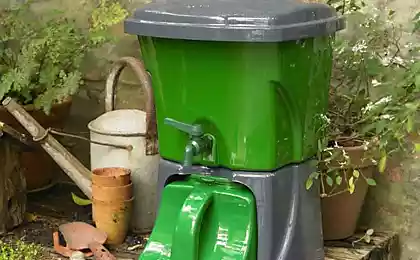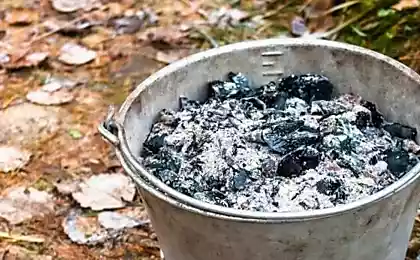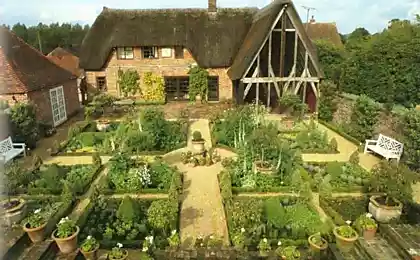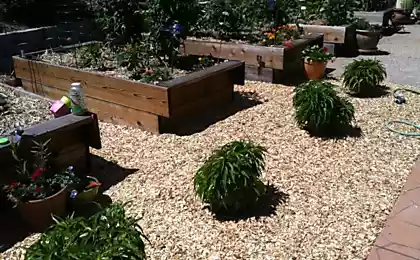585
Wood ash is a great fertilizer for your vegetable garden
When you get to "smokescreen" by neighbors, who burn the felled branches and other garden debris, you want to have campfires in areas banned quickly and permanently. But then he who has no home oven or even barbecue grill, will lose a valuable and easily obtainable fertilizer – wood ash.
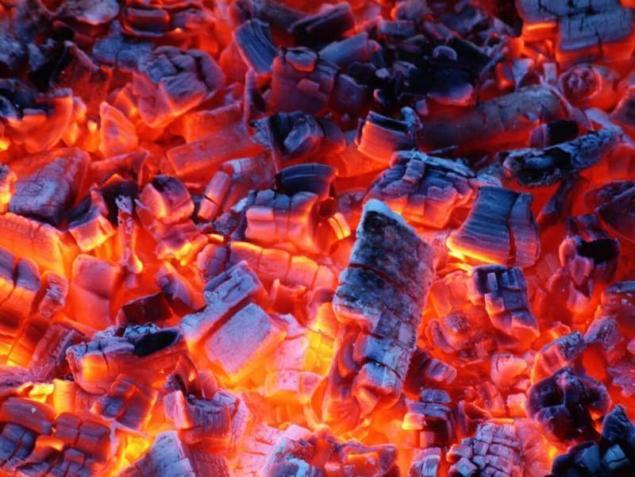
Ash is the product left after burning of crop residues. It is found 74 element in the periodic table, that is, more than half of all of the elements of the earth's crust. Most large content of silicon, calcium, potassium and phosphorus. There are other macro-elements: magnesium, iron and sulfur and is necessary for plants trace elements – boron, manganese, copper, zinc, molybdenum and others.
The mineral composition of this "non-combustible product" can vary greatly depending on which crop residues were burned and the conditions in which these plants lived. For example, the fact that remains of birch wood contains up to 40% calcium, 12% to 13% of potassium, 5 to 6% of phosphorus and 2 to 3% magnesium.
If we compare the composition of wood ash and of ash of herbaceous plants, the first is much more calcium, but less potassium, the amount of which, for example, in the straw "balances" reaches 20-30%. The ash content (percentage of mass of ash to the mass of the combusted substance) young twigs and branches of trees is generally greater than the ash content of the trunk. Tops and other residues of such vegetable crops as potatoes, maize, sunflower, beets, allow ash, which contains many elements necessary for plant life.

Due to its composition, fly ash can serve as a great alternative to mineral fertilizers. Only there is one "but" – it is completely absent nitrogen, and plants need it in fairly large quantities. Therefore, large areas of black earth, this poor "element of life", be sure to apply fertilizer containing nitrogen.
But it is better not to introduce them simultaneously with the ash (this also applies to organic fertilizers, such as mullein), it entails a large loss of nitrogen as it evaporates, turning into ammonia. Should not be used together with ash and phosphate fertilizers: firstly, it already contains phosphorus, and secondly, gives an alkaline reaction in which phosphorus compounds become virtually inaccessible to plants.

It is very important that the ash is almost no chloride compounds, it compares favorably with many fertilizers.
So in the first place it is necessary to make for crops sensitive to chlorine: potatoes, cucumbers, zucchini, cabbage, strawberries, raspberries, currants.
published
P. S. And remember, only by changing their consumption — together we change the world! ©
Source: www.supersadovnik.ru/text/drevesnaya-zola-v-kachestve-udobreniya-1002542

Ash is the product left after burning of crop residues. It is found 74 element in the periodic table, that is, more than half of all of the elements of the earth's crust. Most large content of silicon, calcium, potassium and phosphorus. There are other macro-elements: magnesium, iron and sulfur and is necessary for plants trace elements – boron, manganese, copper, zinc, molybdenum and others.
The mineral composition of this "non-combustible product" can vary greatly depending on which crop residues were burned and the conditions in which these plants lived. For example, the fact that remains of birch wood contains up to 40% calcium, 12% to 13% of potassium, 5 to 6% of phosphorus and 2 to 3% magnesium.
If we compare the composition of wood ash and of ash of herbaceous plants, the first is much more calcium, but less potassium, the amount of which, for example, in the straw "balances" reaches 20-30%. The ash content (percentage of mass of ash to the mass of the combusted substance) young twigs and branches of trees is generally greater than the ash content of the trunk. Tops and other residues of such vegetable crops as potatoes, maize, sunflower, beets, allow ash, which contains many elements necessary for plant life.

Due to its composition, fly ash can serve as a great alternative to mineral fertilizers. Only there is one "but" – it is completely absent nitrogen, and plants need it in fairly large quantities. Therefore, large areas of black earth, this poor "element of life", be sure to apply fertilizer containing nitrogen.
But it is better not to introduce them simultaneously with the ash (this also applies to organic fertilizers, such as mullein), it entails a large loss of nitrogen as it evaporates, turning into ammonia. Should not be used together with ash and phosphate fertilizers: firstly, it already contains phosphorus, and secondly, gives an alkaline reaction in which phosphorus compounds become virtually inaccessible to plants.

It is very important that the ash is almost no chloride compounds, it compares favorably with many fertilizers.
So in the first place it is necessary to make for crops sensitive to chlorine: potatoes, cucumbers, zucchini, cabbage, strawberries, raspberries, currants.
published
P. S. And remember, only by changing their consumption — together we change the world! ©
Source: www.supersadovnik.ru/text/drevesnaya-zola-v-kachestve-udobreniya-1002542
The truth about strong men for strong women
Share charging for electric vehicles: service Elbnb in Sweden












